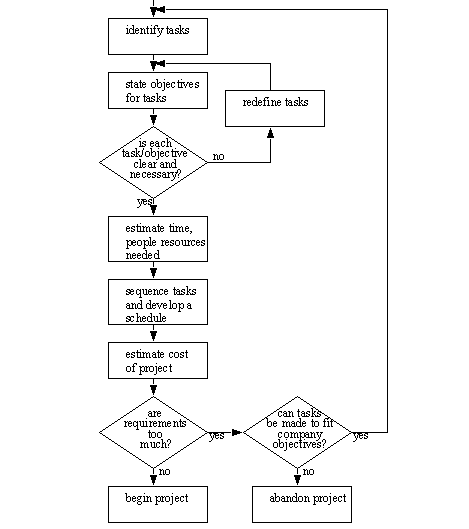
• Management differs from administration in that it sets a new course working on the policy making level - administration follows policy. There are many levels of administration and management.
• Questions that a manager will consider before putting together a design activity include,
- Is the design for a small batch or mass production? smaller batches don’t require as much effort in refining the design. The design cost becomes a significant part of the final cost.
- Is the design an improvement or redesign of an existing product, or is it new? Product improvement/variation can be done with minimal technical effort. The amount of technical effort increases dramatically as we go to a new design.
- What design functions are anticipated? This determines the types of roles on a design team. (These are listed in approximate order of responsibility and authority). Note: All of these roles are important in a successful design. There should be people assigned to each explicitly.
1. Marketing/Product manager - makes major market/customer decisions
1. Design Engineer - Makes major technical decisions an assesses results
2. Manufacturing engineer - makes decisions about production of product
2. Designer/Engineer - does detailed design work based on major decisions
3. Quality control engineer - evaluates quality problems and opportunities
3. Materials specialist - selects materials
3. Industrial designer - makes aesthetic decisions (typically an artist)
4. Drafter - completes drawings of parts
4. Technician - builds, tests, evaluates product
4. Vendor/Supplier Representative - a product manager from another company
- How does the design naturally break into manageable parts? The team can be constant members in a static structure, or can have shifting responsibility and structure. An innovative design must allow more freedom and a dynamic structure. A well defined design should be use a clear structure and set of tasks.
- How much time does the design require? Based on experience and some calculations a manager can set milestones for a design team. Typical tasks might include,
- test concepts with prototype/simulation
- plan for tooling and production
• A manager will tend to follow a set of steps when planning,
